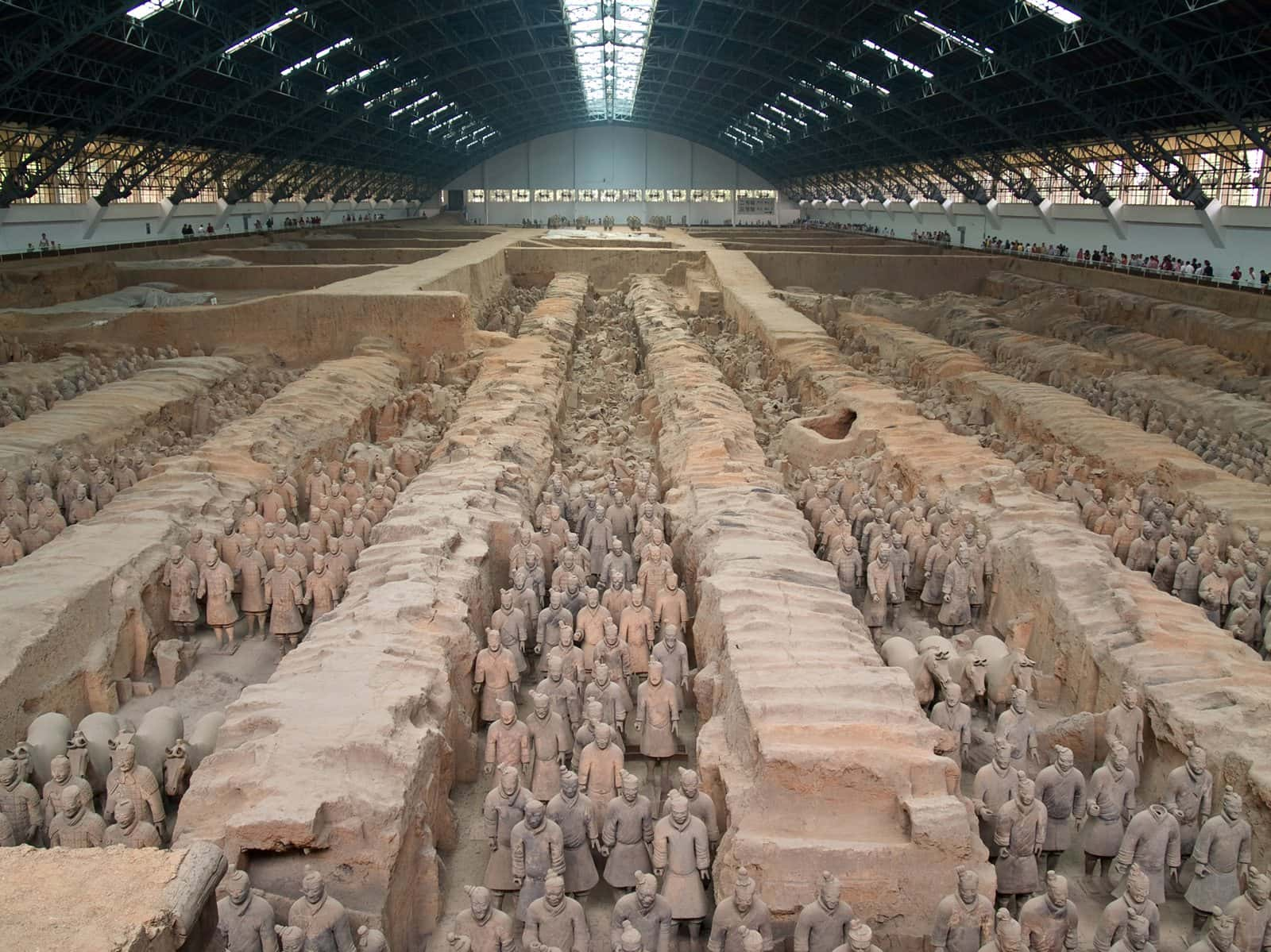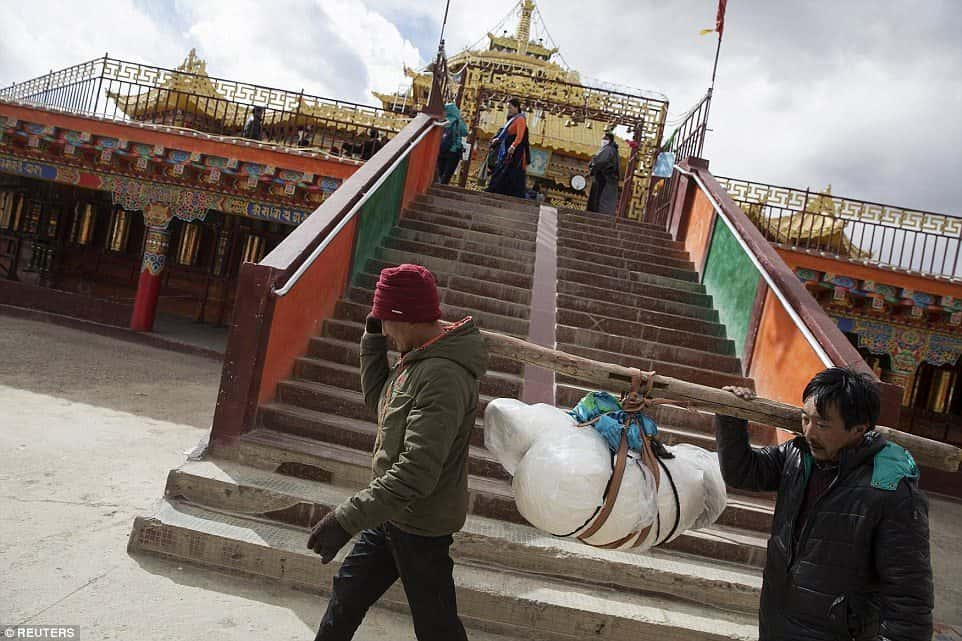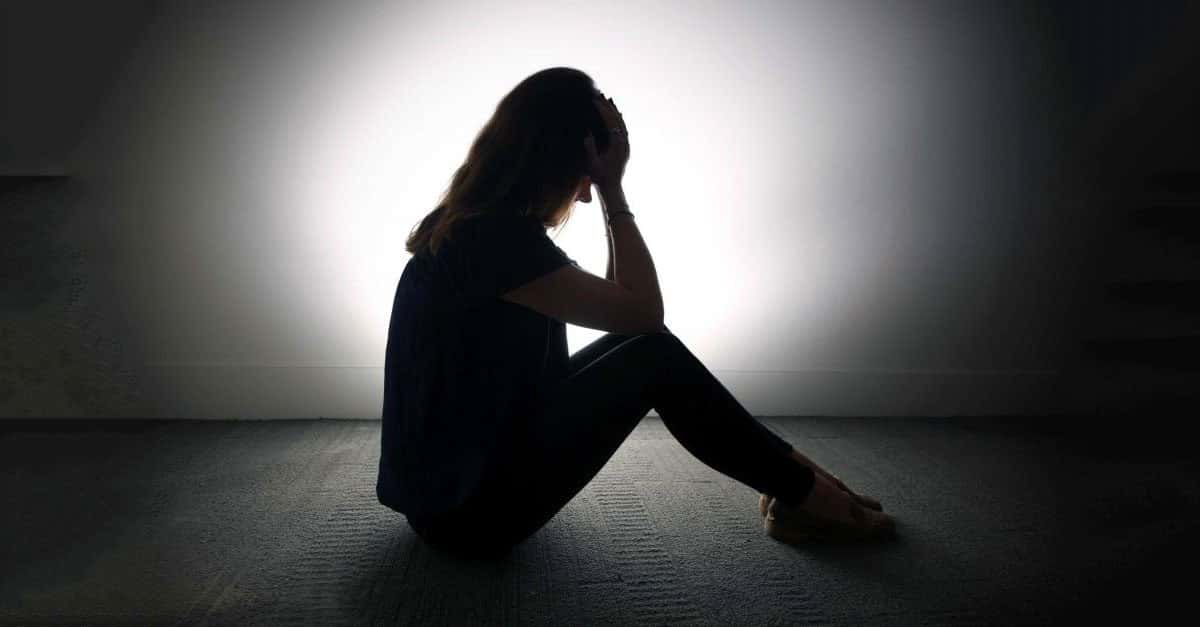"Death is not the greatest loss in life. The greatest loss is what dies inside us while we live." -Norman Cousins
One thing that’s certain is that some day, we’re all going to die. While that may sound very morbid, that fundamental truth has fascinated and terrified people for as long as humans have been around.
43. On the Daily
An average of 153,000 people die every single day.

42. The Search for Immortality
Ancient Chinese Alchemists experimented with different chemicals and substances to try to uncover the secret to eternal life. Their experiments evolved over time into what is now called “Traditional Chinese Medicine”. Many people who practice Chinese Medicine claim these practices help you live longer.

41. Bless You!
As dead bodies decay, they “burp” or release gasses. For this reason, caskets and mausoleums need to be ventilated so that the gas can escape.

40. Final Resting Place
The difference between a “coffin” and a “casket” is the shape. A coffin gets smaller towards the bottom, where the legs go. Back in the day, people uses a lot of wooden crates to carry things, so having that specific coffin shape let people know that there was a dead body in there. As time went on, coffins went out of fashion, and people went back to rectangular-shaped boxes, or “caskets” that are filled with padding.

39. A Curse on Thy House!
When William Shakespeare died, he put on his grave that he would curse anyone who tried to move his body. No one has ever moved it.

38. Tick, Tick, Boom
Grave robbers were an abundant issue for hundreds of years. One of the solutions to the problem invented in the 1800’s was coffin torpedoes. It was basically a land mine that was rigged to set off as soon as someone tried to dig up a grave...and it actually worked. In one instance, a torpedoes exploded, injuring one robber and killing another.

37. Tastes Like Chicken
In some cultures, they practice cannibalistic rituals. They believe eating their deceased loved ones is an honor. It’s called “endocannibalism”.

36. The Professionals
A “Forensic Pathologist” is a doctor who determines the cause of death through autopsies. They are not the same as a “Mortician”, who prepares the body for the funeral. However, in the United Kingdom, a Mortician is required to be educated on how to do both jobs.

35. Biggest Tombs Ever
The ancient Egyptian pyramids were constructed in a way that prevented grave robbers from coming in to steal the treasures that were buried with the Pharaohs. One of the ways they protected the treasure was through “portcullises”, or sliding doors that sealed the tomb once the construction was complete.

34. Toxic Tomb
In ancient China, when Emperor Qin Shi Huang Di died, he ordered the creation of an army of terracotta soldiers to protect his grave site. Legend has it that his tomb contains rivers of liquid mercury and mercury levels of the surrounding areas are abnormally high. To this day the tomb is still largely unexcavated.

33. Sky Burial
Ritual dissection, or “sky burials”, is the Tibetan ritual of placing a dead body on a mountain top and allowing wild animals, birds of prey, and the elements to consume the body. Since Tibetan Buddhists respect all life on Earth, and they believe in reincarnation, they see it as a way to nourish the other living creatures on the planet. While it’s optional, 80% of Tibetan Buddhists choose to have a sky burial.

32. I Guess I’m a Ghost, Now.
Cotard Syndrome is a condition where people believe they are dead. These people might also think they lost their soul, or their organs mysteriously disappeared.

31. A King’s Duty
The ancient Korean King Munmu wanted his ashes to be buried in an underwater grave, so he could reincarnate into a sea dragon and protect Korea forever.

Underwater Burial Site
30. Let The Bullets Fly
During the 1700s, the study of human anatomy was on the rise and as a result, there was a large increase in the number of stolen bodies. In Pennsylvania, cemetery guns were invented to thwart grave robbers. These flint lock guns loaded and trip wires were strung around fresh burial sites to trigger the gun if a robber comes near the grave.

29. Living Forever
Google bought a company called “Calico” that is studying the Biology of aging. Some people have joked that Google is trying to “cure death”. If anyone is going to do it...

Sources: 1 2 3 4 5 6 7 8 9 10 1
28. Locked Away
In Scotland, their solution to protecting the dead from grave robbers was to put them inside of a “mortsafe”, which was basically a giant metal cage surrounding the coffin. Many of these mortsafes can still be seen in cemeteries today.

27. No Time for Tragedy
In ancient China, there were rules called “Yili” for how long you could mourn your dead child. If a child died under 7 years old, they were not given a funeral. If a baby under 3 months died, parents were only allowed to cry one day for every month it was alive.

26. Up in Flames
When people get cremated, they are put in an oven that goes up to 1,500-degrees fahrenheit. It leaves a pile of bones, which is ground into ashes, which is what the family keeps. Large magnets pick up any metal fillings in teeth, replacement hips, etc. There are companies that specialize in recycling replacement hips. Some states made laws to prevent crematoriums from making a profit off of the metal, and make them donate it to a charity.

25. Kaboom!
If a body with a pacemaker were to get cremated or die in a fire, it would explode. In the late 1990’s in France, a widow answered “no” when asked if her husband had a pacemaker, even though he actually did. It exploded, and damaged the crematorium so much, that they to sued her.

24. Beauty Isn’t Easy
When a woman with breast implants is cremated, the implants will melt into goo. It drips to the bottom of the furnace, and needs to be cleaned up once cooled.

23. Heart Healthy
The #1 cause of death is heart disease. While it is hereditary in many families, eating poorly and lack of exercise can lead to early onset heart problems.

22. Only the Good Die Young
As it’s much rarer for young people to die of disease, the top cause of death for people under the age of 30 is car accidents.

Sources: 1 2 3 4 5 6 7 8 9 10 1
21. What’s for Lunch?
Enzymes help digest the food in your stomach while you’re alive, and they keep on eating things once you’re dead. Only...the thing they’re eating is you.

20. The Bone Church
In the Czech Republic, there is a church called The Sedlec Ossuary that is decorated with bones of the dead all over the ceiling. There are skeletons of anywhere between 40,000 to 70,000 people. The people at the time wanted their remains to be closer to God.

19. Don’t Drink and Drive
Every hour, at least one person dies in a drunk driving incident.

18. To Valhalla
You may have heard of a 'Viking funeral'. The body of a viking was placed on a small wooden boat, set on fire, and then pushed out to sea. This was not always the case as many Viking burial sites have been uncovered, including some where the viking was actually buried in his or her boats. The scary thing is that, they weren’t always alone. At some sites the remains of at least one other was found. Historians believe that slaves were sent to accompany their masters in the afterlife.

17. Those aren’t snacks...
Fred Baur, the inventor of the Pringles can was so proud of his invention, he had a portion of his ashes buried in one.

16. Prepping for the Wake
If someone didn’t die peacefully in their sleep, their eyes and mouth are usually open. It can be frightening for people to see their loved ones in this way. Funeral homes and autopsy doctors always close the eyes and mouths of a dead body before showing the remains to the family. There are three ways to close the mouths- wires, sutures, or simply wrapping a scarf around the head, to keep the jaw closed.

15. Sokushinbutsu
Between 1000 AD and 1800 AD, Japanese monks practiced “Sokushinbutsu”, or self-mummification. They would sit cross-legged, and allow themselves to waste away until they died. This was taking the practice of asceticism (the practice of abstinence of worldly pleasures) to the extreme.

Sources: 1 2 3 4 5 6 7 8 9 10 1
14. I Wouldn’t Want That Job
One of the ways Forensic Scientists can tell how long a body has been dead is by examining the types of bugs that are in the body. For example, some bugs only arrive after a certain amount of time and then will all be gone after another interval.

13. Can’t Live Without You
In India, there used to be a tradition called “Sati.” When a man died, his widow was expected to jump into the flames of his cremated body, so that they can be together in the afterlife. This wasn’t required, but many places forced women to do it as it was seen to be an act of loyalty and love. It is now illegal in India.

12. Joseph Merrick
The distorted skeleton of “The Elephant Man” is on display in the Royal London Hospital Museum.

11. A Genius Brain
After he died, Albert Einstein’s brain was preserved. It is on display at the Mutter Museum in Philadelphia.

10. The Myth
Hair and nails don’t actually continue to grow after death. The skin just get dry and tightens, which gives the appearance that hair or nails have gotten longer.

9. Preservation
The modern-day process of “embalming” is draining the blood from a corpse, and replacing it with formaldehyde. This creates a waxy or bloated look to the body. It is possible that an embalmed body will not look very much like the living person did. Many people think it’s required to embalm a body of their loved one, but it’s actually not.

8. Save the Planet
A “green burial” is a movement endorsing the choice to not embalm corpses with chemicals, and to choose caskets that are eco-friendly. It’s also actually cheaper for the families of the deceased to have a green burial.

Sources: 1 2 3 4 5 6 7 8 9 10 1
7. Say Cheese! Oh...Wait...
In Victorian England, photography had just become affordable to the public. If they never got the chance to get a photo of their loved one before they died, they got pictures taken of them when they were dead. There are many family photos where the whole family even gathers around the dead body, so they have something to remember them by.

6. Dad’s In the Garden
Some people want to save even more money by burying their parents in their own backyard, especially if they own a lot of land. The laws are different in every country. In the United States, that law changes from state to state. Towns have “burial permits” so that people can burry their loved ones according to their wishes and also in accordance with the law

5. Up in the Air
Airlines need to have protocols for if someone ever dies while on a plane. They will usually find an empty row, and lay the body out, moving other passengers as far away from it as possible. However, if the plane is totally booked, everyone has to just stay in their seats...including the person sitting next to the dead guy.

4. Teeny Tiny
In certain areas of South America, tribes would shrink the heads of the deceased. Tribes would go on raids to steal these shrunken heads from other tribes, because they were thought to be sources of power. Eventually the heads became valuable amongst European collectors they would trade western technology including guns for the heads. Of course this made it easier for the tribes to create more shrunken heads.

3. Don’t Be A Stiff
Three to four hours after you die, your body gets stiff in an effect known as rigor mortis. If a mortician needs to move the body, they can massage the muscles to loosen them up enough to reposition the body. However, after 36 hours, the body loosens up again, and is easier to move.

2. Digits
In New Guinea, there was a tradition that when a woman’s husband died, she was forced to cut off the tips of her fingers as a symbol of her pain and grief. The tradition is now banned, but older people living in tribes still have this disfigurement.

1. Just Hanging Out
The Bo people in Southern China would put their dead loved ones in caskets, and suspend them from the side of a cliff. All along the cliff face, there were paintings of how their loved ones spent their lives. However, much of the information about the origins of this practice were wiped out during the Ming Dynasty and so, no one knows why they initially chose to put loved ones on the side of a cliff, instead of burying them.











